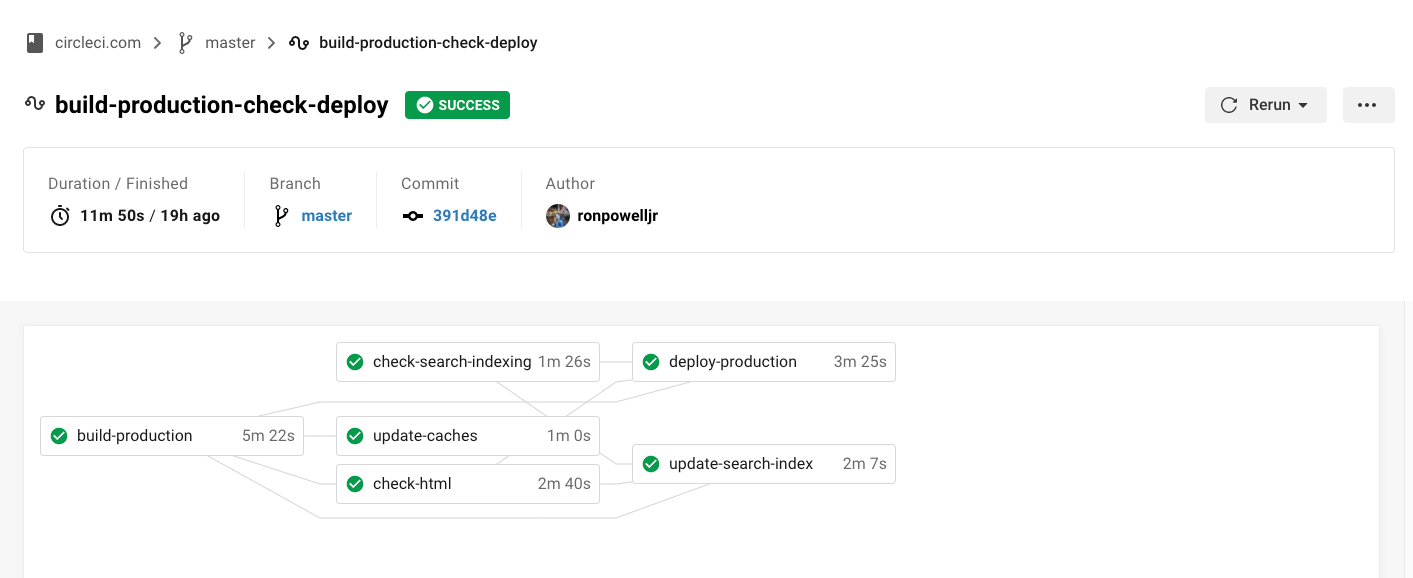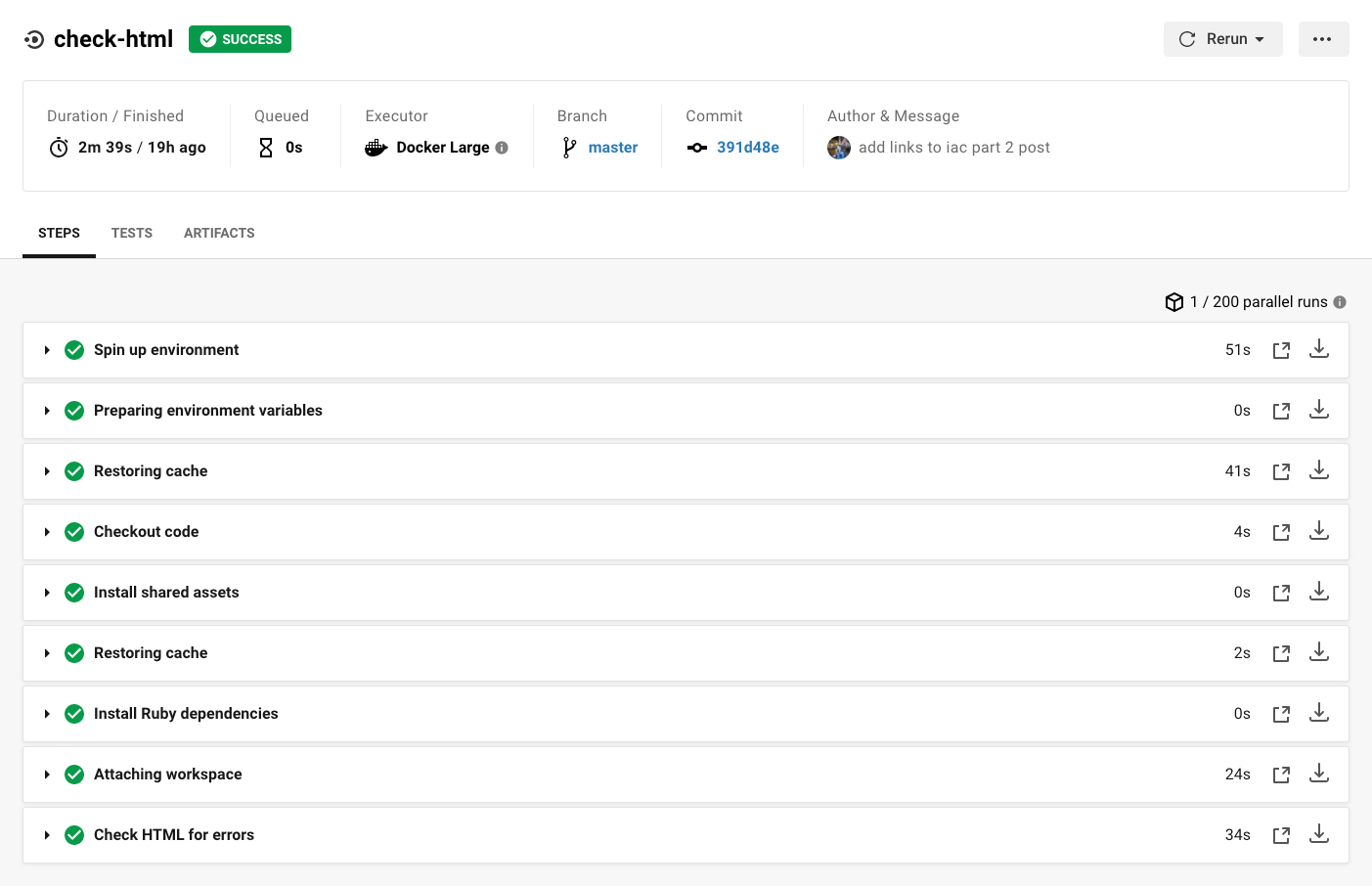
A CI/CD pipeline is a series of automated steps that helps software teams deliver code faster, safer, and more reliably. Pipelines are an essential part of continuous integration and continuous delivery (CI/CD) and are critical for modern software development.
By automating the build, test, and deployment processes, CI/CD pipelines reduce the risk of manual errors, ensure consistent output quality, and enable rapid iteration and deployment of applications. This automation is especially beneficial in environments where many contributors are making frequent changes to the code base.
In this article, you will learn how CI/CD pipelines work and explore the benefits they offer to software development teams.
What is a CI/CD pipeline?
A CI/CD pipeline coordinates all the processes involved in continuous integration and continuous delivery.
Continuous integration (CI) is a process in which developers continually commit code in small increments—sometimes multiple times a day—which is then automatically built and tested before it is merged with the shared repository.
The main goal of CI is to provide quick feedback so that if a defect is introduced into the code base, it can be identified and corrected as soon as possible. CI helps reduce the time and effort required for integration problems and allows developers to enhance software quality continuously.[
Continuous delivery (CD) extends CI by automatically deploying all code changes to a QA and/or production environment after the build stage. This ensures that you can release new changes to your customers quickly and sustainably. This practice helps developers automate the deployment process, minimize bugs in production, and increase the speed of software releases.
The CI portion of a CI/CD pipeline includes source code, build, and test stages of the software delivery lifecycle, while the CD portion includes the delivery and deployment stages.
CI/CD pipeline stages
CI/CD pipelines assist the development process by automatically moving code through various stages of building, testing, and deployment, validating that the code works as intended and meets quality standards before it reaches production.
Each stage of a CI/CD pipeline plays a pivotal role in enabling continuous improvement and frequent deployments. Let’s delve into these stages to better understand how they contribute to an optimized development lifecycle.
Source code stage
The starting point of the CI/CD pipeline is the repository, where all code is stored and managed in a version control system like Git. Developers continuously merge, or integrate, their changes into a shared repository to maintain up-to-date versions that can be worked on by other developers and deployed at any time.
This may sound simple, but it quickly introduces complexities. When multiple developers are making concurrent changes to a shared codebase, problems can arise, including:
- Conflicting changes
- Difficulties in managing dependencies
- Issues related to branching and merging strategies
To help prevent these issues from occurring and disrupting the flow of the team, a CI/CD pipeline will monitor the repository for changes and automatically trigger a series of validation steps, starting with the build stage.
Build stage
During the build stage, the CI/CD system compiles the source code into executable or deployable artifacts. This process also often includes tasks such as code linting, static analysis, and other pre-compilation checks. These activities help to ensure that the code meets quality standards and is syntactically correct before it moves to the next stage.
If the build is unsuccessful, the CI/CD pipeline will halt, and the development team will be notified of the failure through alerts or status updates within the CI/CD tool. This immediate feedback allows developers to quickly address the issue, preventing flawed code from progressing further down the pipeline and causing more complex issues and delays.
Testing stage
All too often, development teams move directly to the deploy stage. This is a mistake because the testing stage is where the key benefits of CI/CD shine. Software testing is a complex and repetitive process that your CI/CD pipeline helps automates for you.
There are several different types of testing, all of which can be used together in an automated continuous integration pipeline. You can combine unit testing and integration testing to provide the most test coverage possible. Testing also contributes vital data about software performance that can immediately be integrated back into the code. The result of testing is high quality software with fewer and fewer bugs.
As with the build stage, the CI/CD pipeline will immediately stop and notify developers If any of the tests fail. These rapid feedback loops are essential for maintaining a high standard of code integrity while keeping developers productive and in flow.
Deploy stage
The deploy stage is where you can orchestrate software releases to production or other environments. Your pipeline can be configured to deploy code on a schedule, roll out software to all customers or just a select group, and even roll back releases when there is a problem. You get to decide what the best strategy is for getting updated software to your customers. It can all be automated as part of your CI/CD pipeline.
Key components of CI/CD pipelines
The DNA of a CI/CD pipeline is the configuration file. Configuration files are stored in your code repository and are written in declarative YAML code. This configuration-as-code approach allows teams to manage their pipeline definitions right alongside their application code, adding transparency and traceability to pipeline management.
CI/CD pipeline configuration files allow you to define the jobs you want performed, the order in which they should occur, and the execution environment in which they should run. Let’s take a closer look at each of these components.
Jobs and steps
Jobs are the basic units of work in a CI/CD pipeline. You can define specific requirements for each job, such as the runtime environment and the resources needed.

Each job can include multiple steps, or tasks like compiling code, running tests, and deploying software. Each step is a single executable command specified as a key-value pair. The key indicates the type of step, and the value can be either a map or a string. When the step is a run, you can specify which command to execute as a string value.

Workflows
Workflows are the orchestration layer within CI/CD pipelines that manage how jobs and steps are sequenced and interact.
Workflows define the rules that govern the execution order of jobs and can include conditions under which certain jobs should be triggered. They allow you to specify dependencies between jobs, ensuring that they run in the proper sequence. For example, you might configure a workflow where a deployment job only runs if the preceding test jobs have succeeded.

Execution environments
Execution environments are critical components of a CI/CD pipeline, as they provide the contexts in which the jobs and steps are executed. Examples include local servers, dedicated virtual machines (VMs), containerized environments like Docker, and cloud platforms such as AWS EC2, Google Cloud VMs, or Azure VMs.
Many modern CI/CD pipelines leverage cloud-based environments due to their flexibility and scalability. CircleCI and other CI/CD platforms offer services that can automatically provision and scale cloud execution environments based on the pipeline’s needs. This capability is invaluable for handling variable workloads and for teams that do not want to maintain physical infrastructure.
Cloud execution environments available on CircleCI include:
- Docker (x86 or Arm)
- Linux VM
- macOS
- Windows
- GPU
- Arm VM
Teams can also choose to run some jobs in the cloud and others on local or private infrastructure using self-hosted runners.
Benefits of CI/CD pipelines
CI/CD pipelines are foundational to Agile and DevOps practices, providing numerous advantages for software teams, including:
- Faster releases
- Higher quality
- Reduced manual effort
- Enhanced productivity
- Improved security
- Increased developer satisfaction
- Reduced development costs
CI/CD pipelines not only accelerate development cycles but also ensure that software deliveries are more reliable and of higher quality, providing a competitive edge in fast-paced markets.
Learn more about the value of CI/CD
CI/CD features with CircleCI
Some of the features you’ll encounter when building CI/CD pipelines on CircleCI are the use of multiple resource classes, parallel test splitting, orbs, matrix jobs, environment variables/contexts, conditions, and approvals.
-
Resource classes: CircleCI offers a number of resource classes that allow you to optimize CPU and RAM resources for each job.
-
Parallel test splitting: To reduce the time it takes for your CI/CD pipelines to complete, you run tests in parallel by spreading them across multiple execution environments.
-
Orbs: Orbs are reusable packages of YAML configuration that condense repeated pieces of config into single lines of code. They allow you to share commonly used configuration elements across projects as well as easily integrate popular third-party tools into your pipelines.
-
Parameters: Pipeline variables, environment variables, and contexts are parameters that allow users to store and reuse data and to protect sensitive information.
-
Matrix jobs: Matrix jobs run multiple jobs concurrently under different conditions, which is helpful for situations such as testing software across various operating systems, versions, or configurations.
-
Approvals: Workflows can be programmed to wait for manual approval of a job before moving on. This can be helpful if you want to add a layer of human review to your automated deployments.
Start building CI/CD pipelines with CircleCI
If you’re new to CI/CD, understanding what pipelines do and are capable of will help you capture the true value of DevOps and automation.
You can get started running your first CI/CD pipeline in minutes by signing up for a free CircleCI account and following our quickstart guide. There are numerous tutorials and examples you can follow to build a pipeline that meets the unique needs of your team and project.





